How do you shape your marketing strategies?
Do you approach the process tactically, ensuring that each decision — big or small — positively affects your brand’s reputation and aligns with your target audience’s wants and needs? Or do you go with the flow, trying to ride the wave of whatever hashtag or marketing technique is trending momentarily?
If you have big plans for your business, you need a strategic approach to your marketing activities. At the most fundamental level, this means tailoring every single one of your messages to appeal to your potential customers.
However, the thing about successfully doing this is that the ideal approach for your business will inevitably vary depending on whether you’re trying to convert B2B or B2C buyers. Ultimately, these two consumer groups have hugely different needs, pain points, and objectives. Their buyer journeys vary, along with their priorities when choosing what solutions to invest in.
So, if you don’t want your hard work to fall on deaf ears, here’s how the principles of B2B vary from B2C marketing. This guide will give you an overview of the key differences to remember while shaping your marketing strategies. Let’s get into it.
On-Site Marketing Principles and Execution
As you optimize your marketing strategies to appeal to professional users or end consumers, the best place to start is your website.
Ultimately, your brand’s online presentation speaks a lot about your organization. Adopting the right on-site marketing principles (ones that align with your target audience’s preferences) and perfecting their execution will significantly ease the process of engaging, converting, and retaining customers.
Web Design
Your website’s aesthetic appeal may not seem consequential at first glance. Nonetheless, scientific research shows that web design significantly impacts people’s willingness to engage with a brand and invest in its solution.
Moreover, real-life surveys support these findings as well. One of Adobe’s studies discovered that 59% of people prefer to consume beautifully designed content over something plain and simple.
Thus, the first step toward building a successful digital marketing strategy is to design a website your ideal customers will love.
B2B: Create a highly informative and professional online environment
If you’re trying to reach and delight a B2B audience, prioritize building a site that’s professional, informative, and easy to navigate. Make sure to:
- Opt for a clean aesthetic that aligns with your brand’s identity.
- Prioritize responsiveness and speed.
- Use professional visuals that demonstrate a dedication to quality and attention to detail.
For an example of a brand that does all this, check out Red Hat. This business maximizes the potential of minimalistic web design, employing negative space to emphasize its value proposition.
Moreover, note how the navigation menu makes it tremendously easy for B2B prospects to find the information they need. This really boosts their browsing experience and makes it more likely that they’ll discover a reason to invest in Red Hat’s products.
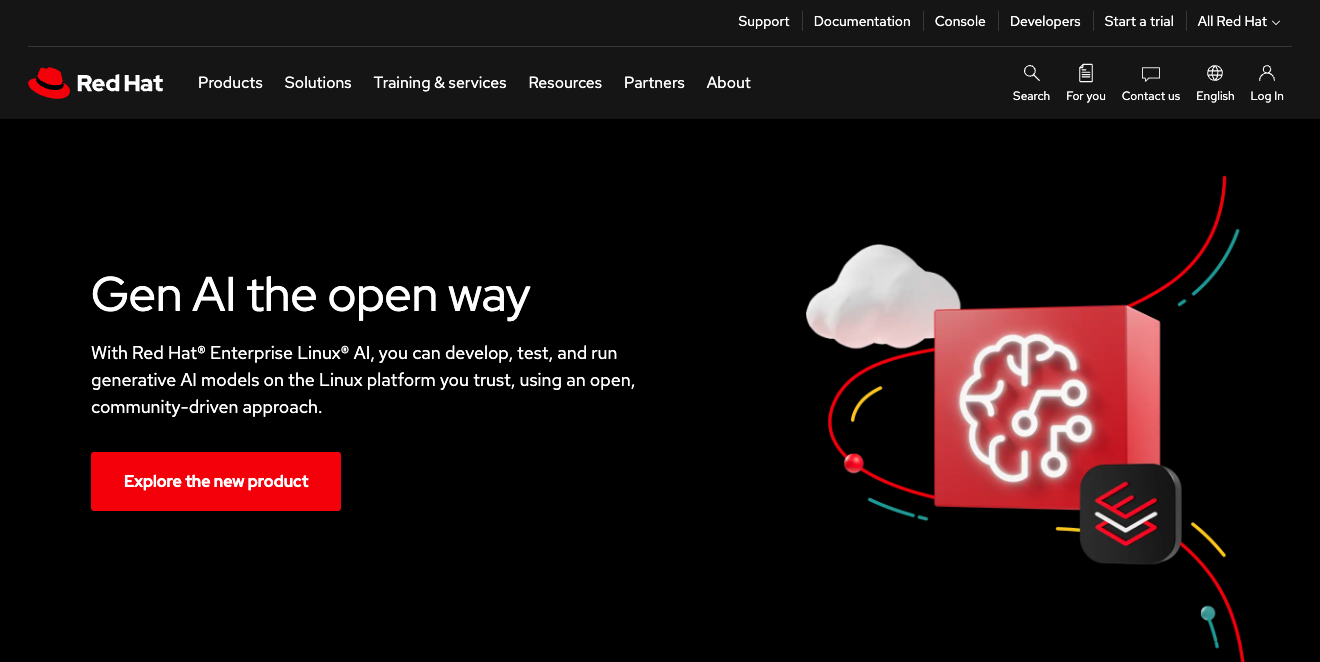
B2C: Engage your prospects with personality and a simple browsing experience
On the other hand, if you’re aiming to reach a B2C audience, such a professional web design direction may not be your best choice. Instead, you want to create an online presentation that’s attractive and engaging, with a strong personality and a casual, user-friendly interface.
If you check out Bark, you’ll see that this brand applies all the correct B2C marketing principles. Its homepage is humorous, endearing, and relatable. Furthermore, the interface is super simple, making the browsing experience seamless for end consumers searching for pet products.
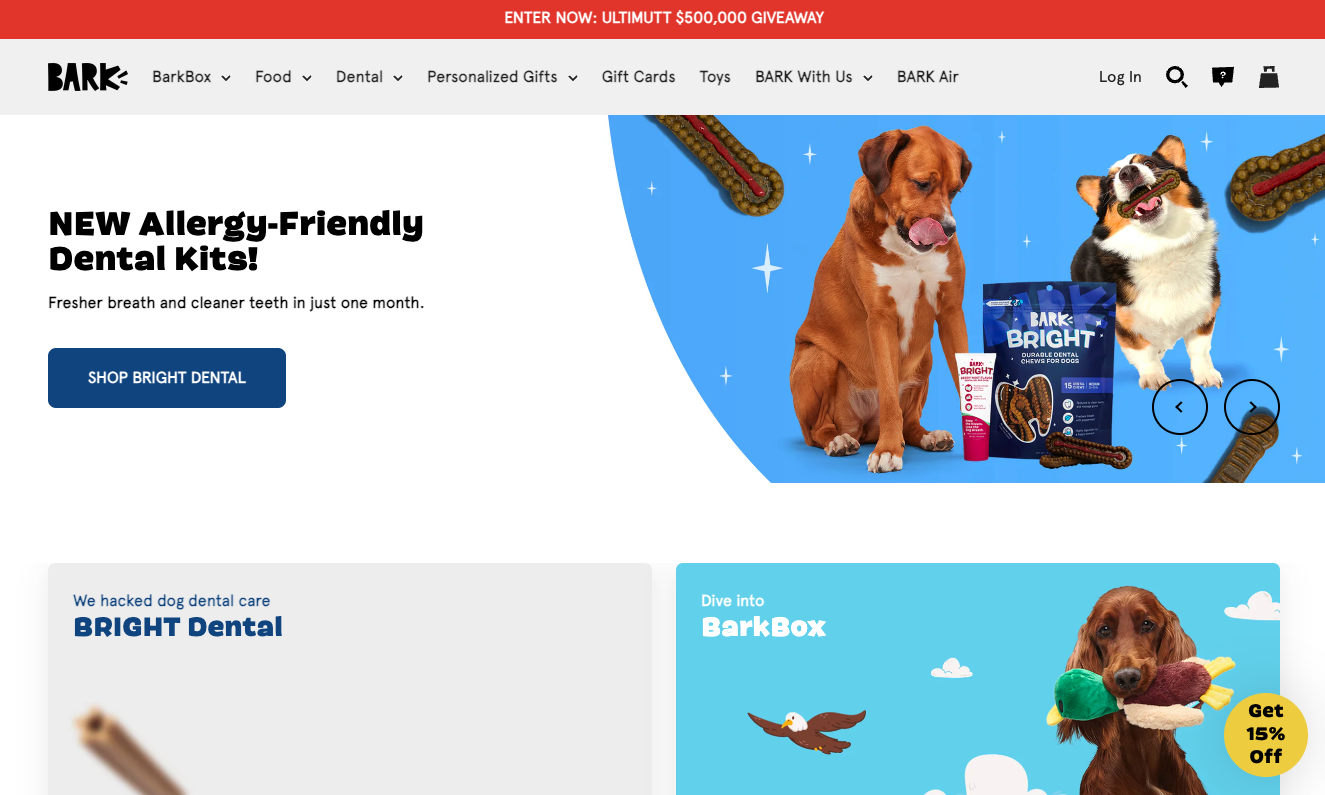
Website Copywriting
In addition to B2B and B2C customers necessitating different approaches to web design, successfully convincing them to convert requires you to adapt your website copywriting.
B2B: Focus on the specific ways you can solve customer pain points
Professional users, on the one hand, want detailed technical information focused on measurable benefits. Gartner’s research discovered that the top five purchase-influencing factors for B2B software buyers include security, ease of use, features and functionality, cost, and ability to integrate with other technology.
This means that the primary principle for your website copywriting in B2B will be to focus on product features that can solve your prospects’ pain points (and not to shy away from addressing the how).
Rosie does this spectacularly in the “Turn missed calls into new revenue” section of its homepage.
Here, the brand explains how not missing calls helps businesses maximize their advertising ROI. It points out that training AI on company data contributes to customer satisfaction. Finally, it addresses the common frustration of no-shows, proposing a simple solution of automated appointment confirmation calls.
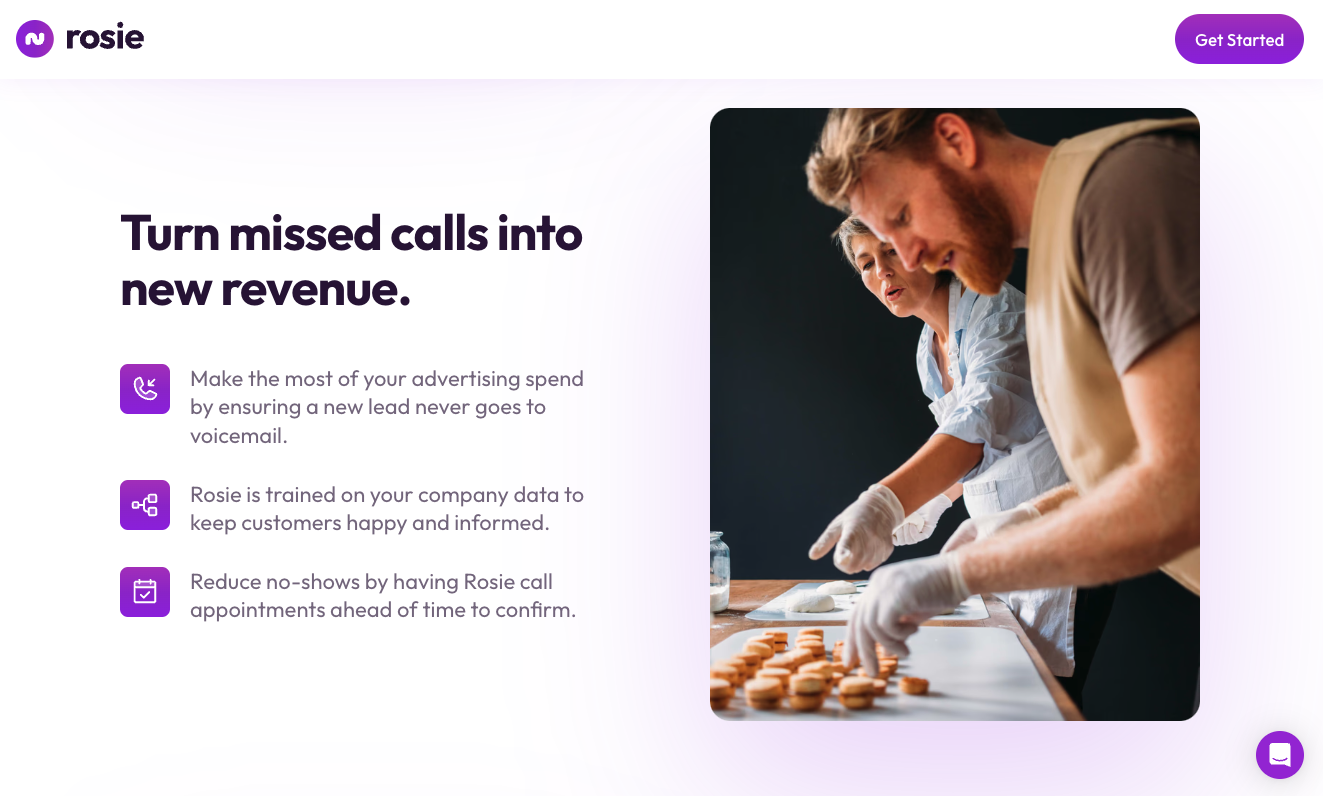
B2C: Delight prospects and make them want to invest in your solutions
On the other hand, when targeting end consumers, you’ll want to adopt a far more relaxed approach to web copy.
The best copywriting principle to engage B2C buyers is to rely less on technical language. Instead, focus on developing a conversational, approachable tone and aim to describe solution benefits in a way that has an emotional impact on your audience.
The Mom+Kids landing page on Attitude skillfully utilizes phrases that appeal to the brand’s target audience’s emotions.
Firstly, the headings emphasize that happy babies make happy parents. Then, the copy repeatedly highlights how the brand’s products include gentle, dermatologically-tested, natural ingredients that will pamper children in an eco-friendly way — an outcome that all parents aspire to.
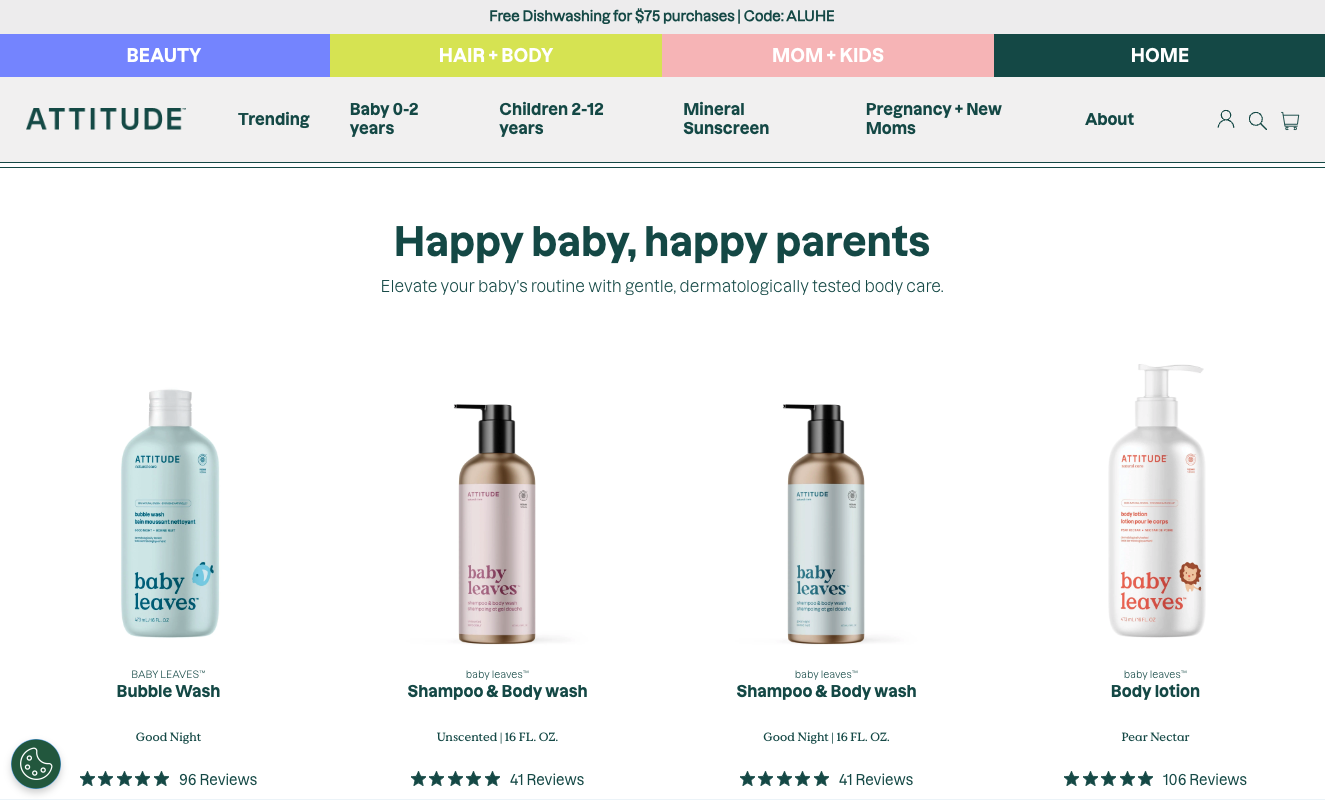
Value Propositions
How does your website communicate user value? And should you adopt a different approach depending on whether you’re trying to delight professional vs. casual users?
The thing about composing the perfect value proposition for your website (or your off-site marketing campaigns, for that matter) is that inspiring conversions highly depends on how successful you are in convincing your target audience they need your product in their lives.
Use the right wording and terminology, and your prospects will perceive your solutions as the best possible answer to their pain points. Miss the mark, however, and you risk the possibility of them seeing your promises as irrelevant.
B2B: Highlight measurable and long-term benefits
To write a great B2B value proposition, focus on the type of value professional users appreciate the most. Address ROI, efficiency, and expertise and emphasize measurable, long-term benefits.
If you check out Chargebee, you’ll notice this is precisely what the business does. Notice how it invites prospects to “Unlock a lifetime of subscriber growth and retention.” It also uses the page header to point out that the solution helps businesses acquire, grow, retain, and manage customers in 227 countries.
Plus, the visual aspect of the hero section shows off a few of the software’s core capabilities, including the ability to bill customers, analyze revenue, and present customers with special offers.
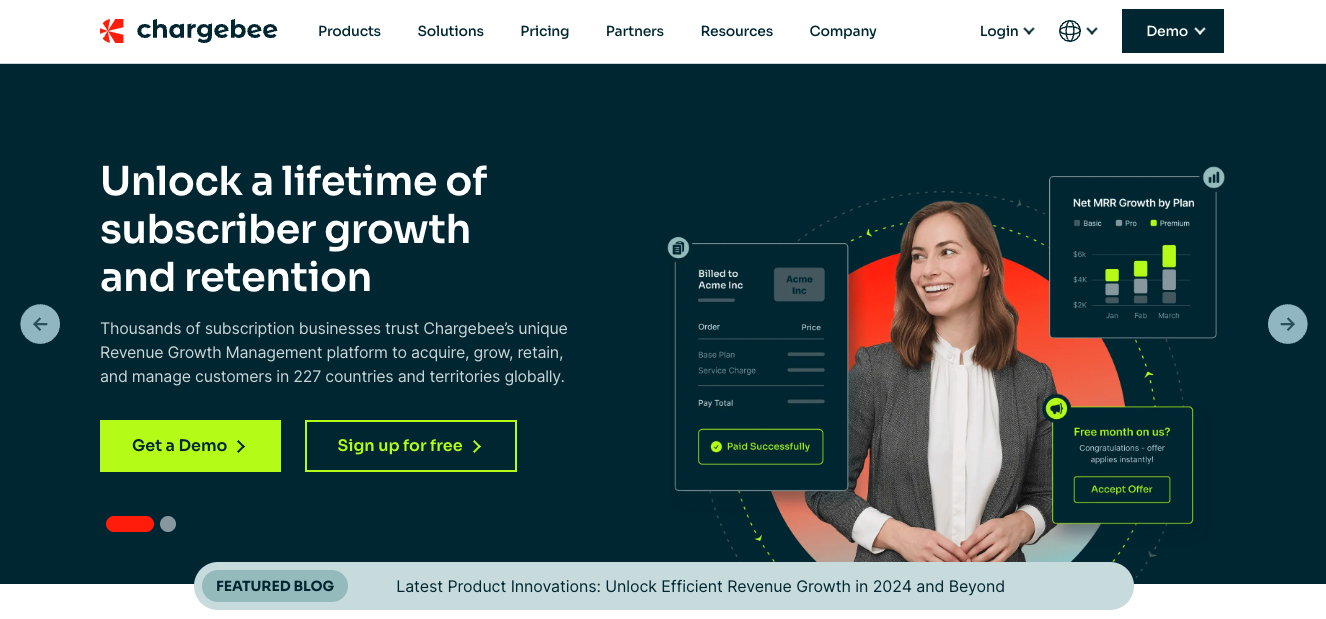
For an even more advanced approach to B2B value propositions, look at AuditBoard. This brand goes further on the measurable front, using specific numbers to describe the outcomes its solution can achieve.
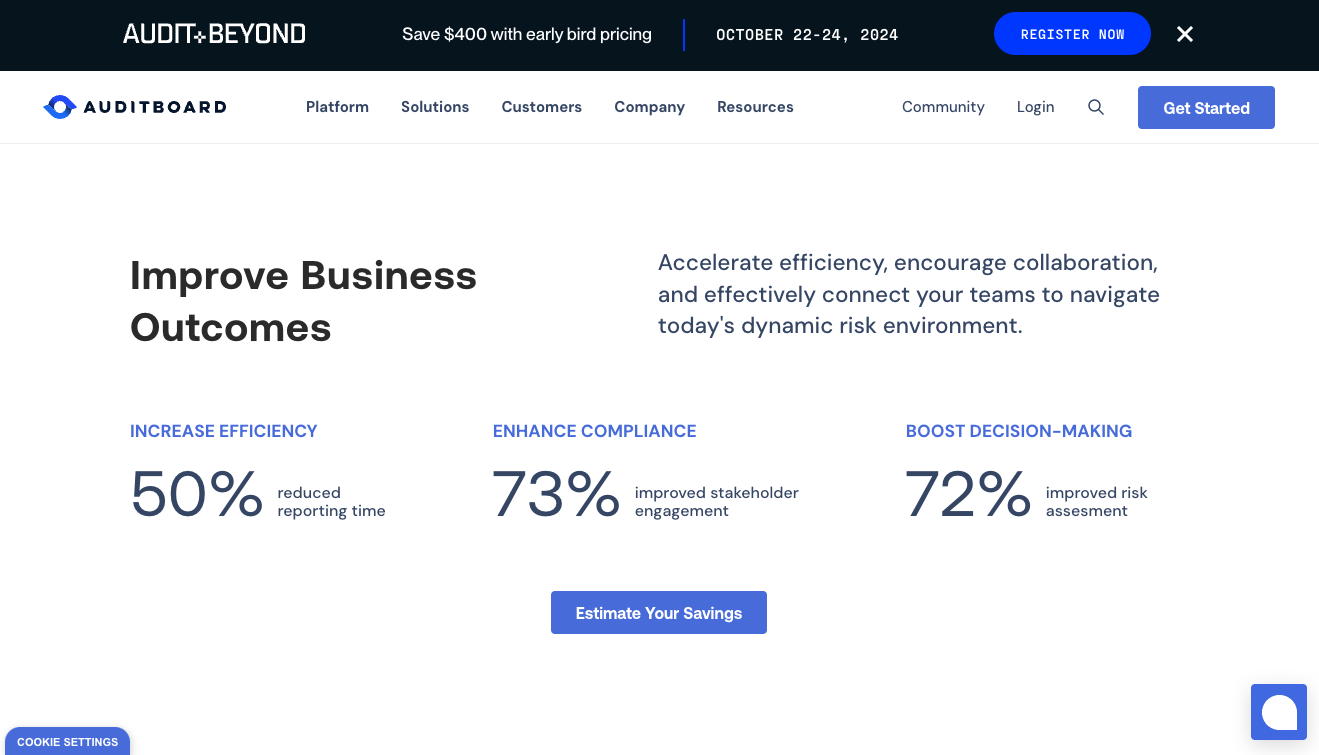
B2C: Describe compelling immediate outcomes
B2C customers tend to concentrate more on the here and now.
So, to capture their attention and earn their business, your value propositions need to depict an irresistible immediate outcome.
In this regard, the marketing principle you should follow is to focus on experience and immediate benefits. Moreover, play up your brand’s reputation by accentuating the aspirational effects your solutions bring to life.
Very few brands do B2C value propositions as well as Rolex. Despite keeping website copy to a minimum, this brand gets it right by inviting consumers to “Make the world [their] oyster.”
This value proposition isn’t the perfect summary of what Rolex’s buyers want — a life of opulent delight. But it also ties in with the brand’s reputation for luxurious craftsmanship, further emphasized by the high-quality visuals throughout the page.
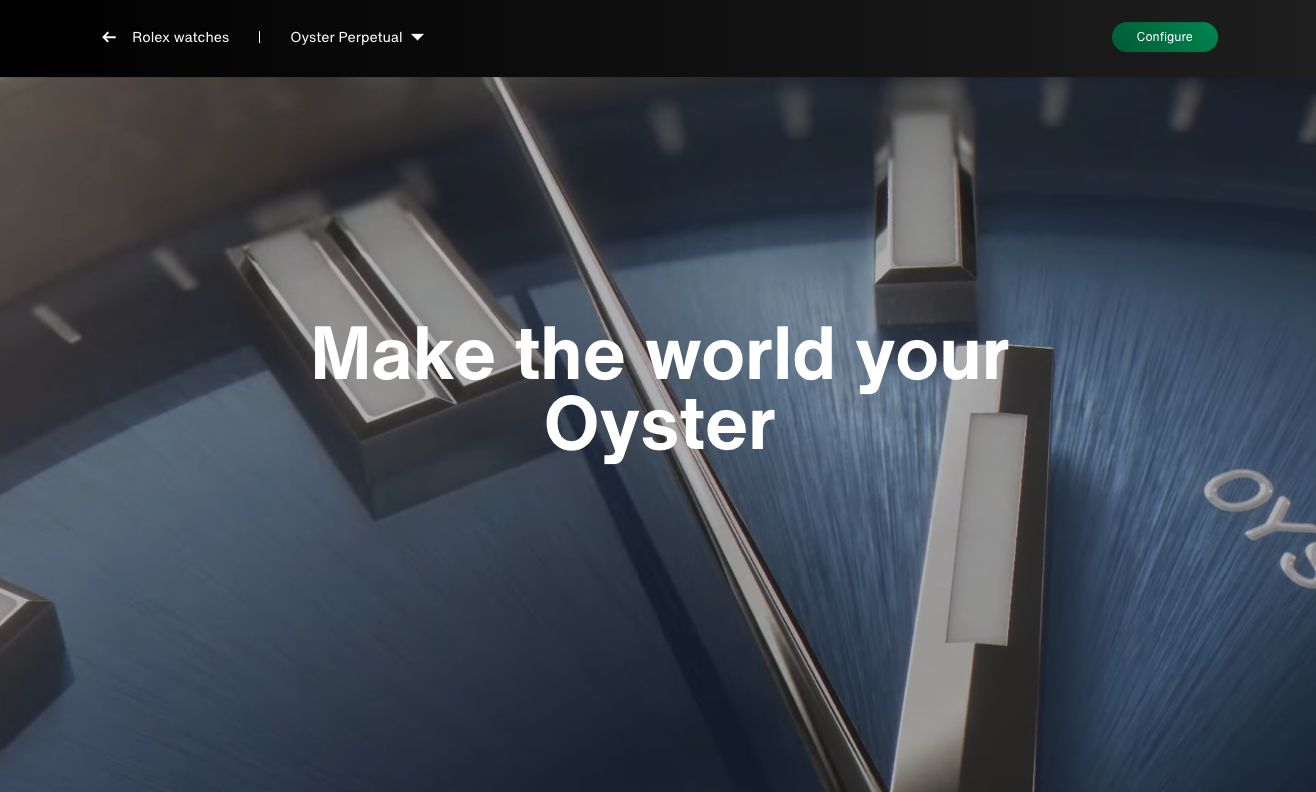
Imagery and Media
Finally, as you explore on-site B2B vs. B2C marketing principles, remember that visuals allow your business to engage and convert customers. You’ll want to employ the right website media if you want your offer to appeal to your prospects.
B2B: Use visuals as a way to emphasize product benefits and value
As you explore ways to use imagery and media to appeal to B2B audiences, find ways to communicate measurable benefits and value with visual formats.
Prioritize professional appearances, focus on your products, and explore ways to make these assets data-driven.
Some formats that work best in a professional setting include infographics, charts, product images, and animations, as well as corporate videos that condense a lot of information into a short piece of media.
Logrocket, for instance, uses in-app screenshots to communicate the value its solution brings to professional users, allowing potential customers to witness, first-hand, the type of use they can get out of the brand’s software.
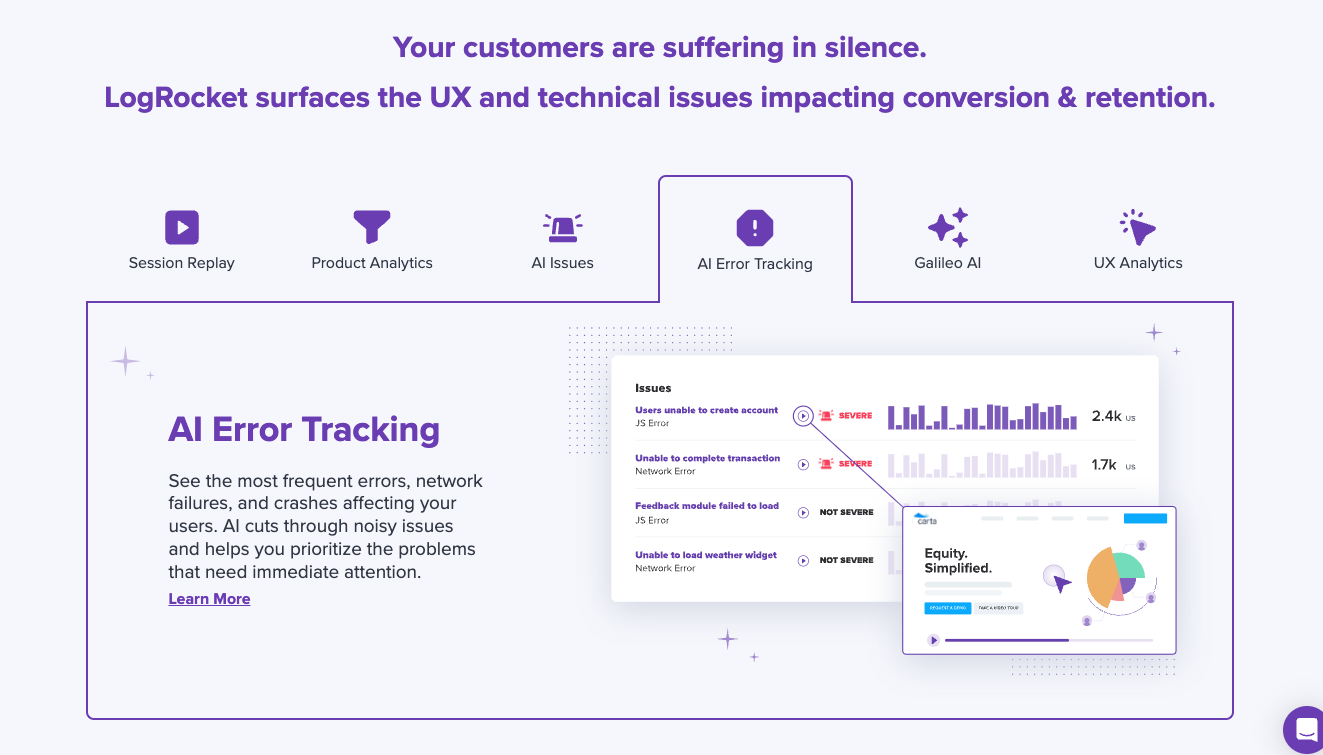
B2C: Employ imagery to depict an aspirational lifestyle or outcome
However, if you’re looking for visual marketing principles to attract and convert individual consumers, you’ll want to focus less on technical data.
The perfect visuals for this type of audience include aspirational, lifestyle-oriented, and attractive photos, videos, and user-generated content.
The Shay & Blue header video is a perfect example of a well-implemented B2C visual marketing strategy. It uses an engaging video to depict the versatility and uniqueness of the brand’s fragrances and their ability to fit into any lifestyle, no matter how common or quirky.
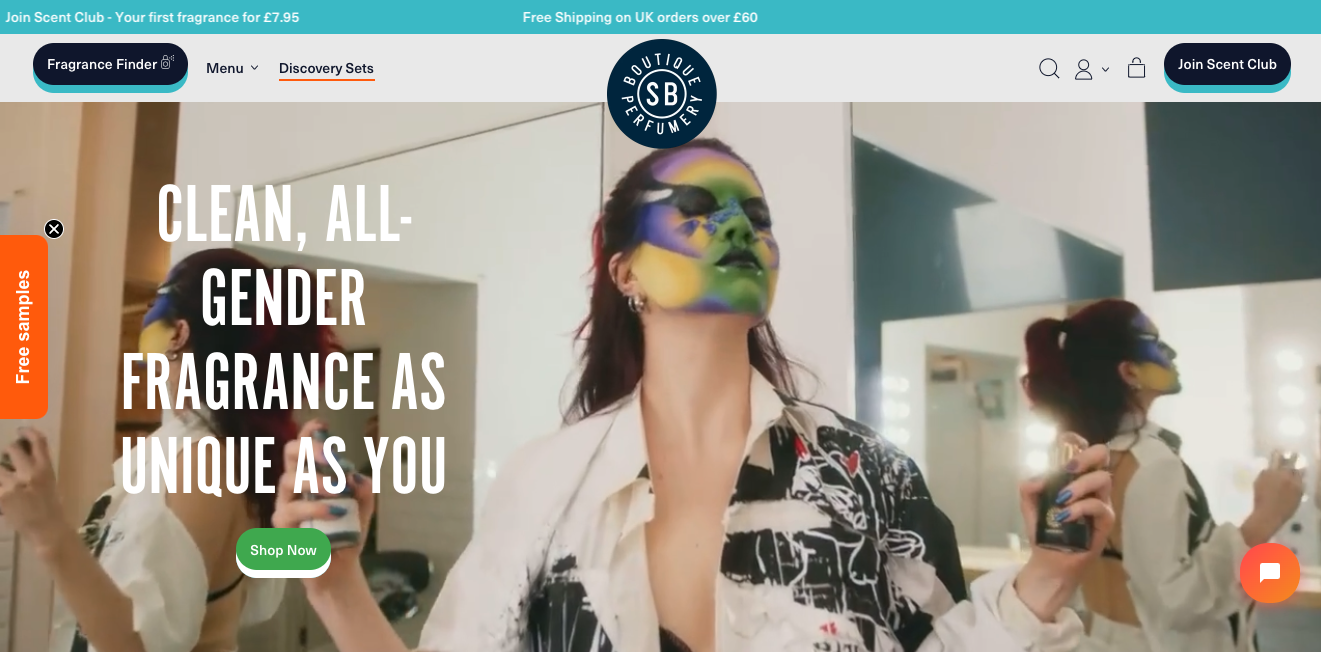
Broader Marketing Channels
Perfecting your brand’s website is an exceptional first step toward building successful marketing strategies. Still, not all of your prospects will discover your business (or interact with it, for that matter) via your site.
To optimize your lead acquisition efforts, you first need to understand the difference between the optimal B2B and B2C principles on your broader marketing channels.
Content Marketing (Blogging)
Content marketing — blogging, in particular — is one of the most effective ways to reach and engage your target audience.
This method of boosting organic traffic offers a high ROI, but that’s not all. It’s also exceptionally effective at:
- establishing brand authority
- gaining your prospects’ trust
- nurturing leads through the different stages of the sales cycle
- ultimately, building a loyal customer base as a result of successfully accomplishing all the previous points
Of course, the best way to use content for your brand hugely depends on whom you’re trying to convert.
B2B: Invest in content that establishes industry authority
For B2B buyers, ROI is a crucial purchase-influencing factor. To win them over with content, invest in educational, industry-specific pieces that demonstrate your brand’s expertise and reliability.
Surveys, reports, and original research, like Wyzowl’s annual Video Marketing Statistics document, are an excellent ToFu format to attract and win over professionals exploring solutions or researching information in your industry.
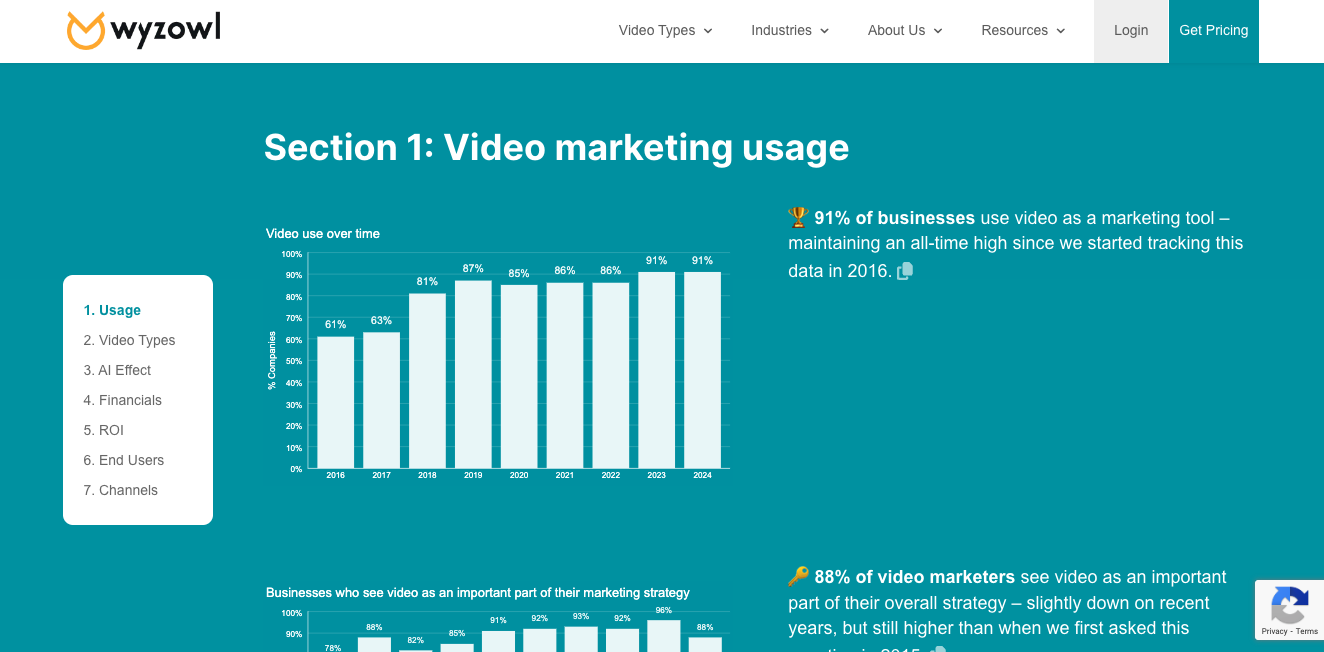
However, if you’re trying to engage and convert B2B customers in the mid-to-lower stages of the sales funnel, focus your content marketing efforts on more thorough pieces.
Case studies and customer success stories can be an exceptional way to boost credibility.
Or, you can do what Aura does on its blog and center your blog posts around industry insights or highly specific customer pain points, providing potential customers with highly effective advice on removing them. Just check out how the brand does it in its Ultimate Guide to Crushing Amazon Prime Day 2024 article.
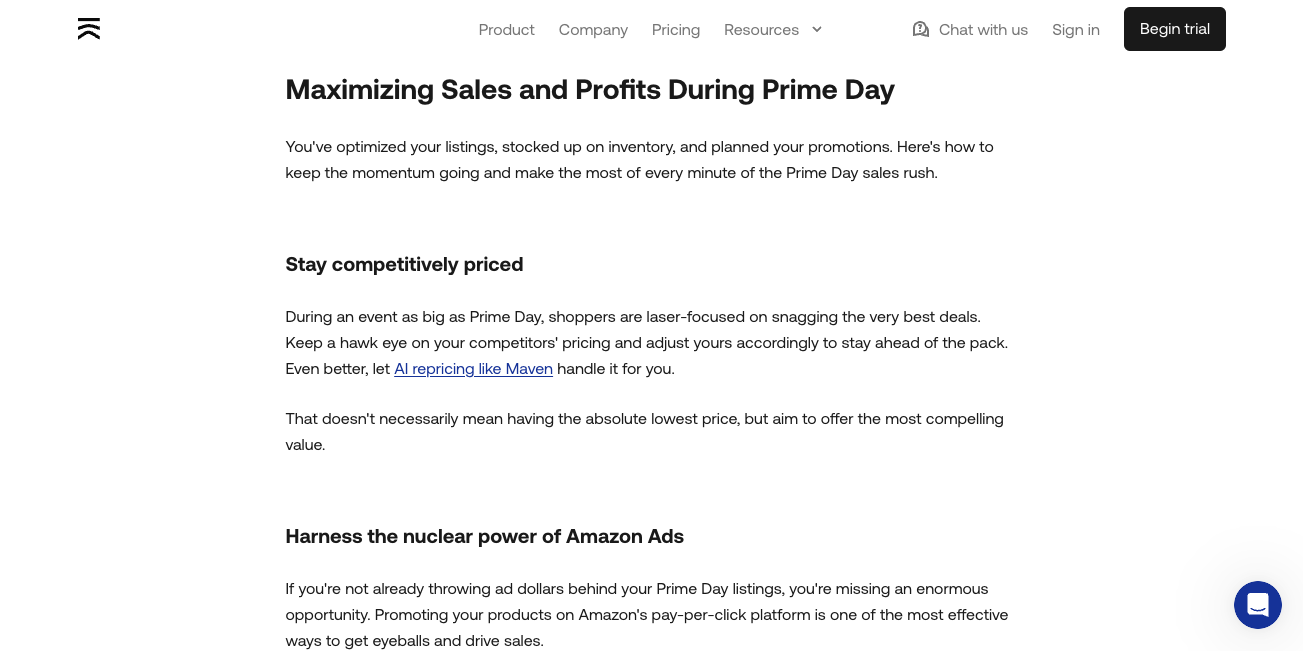
B2C: Create appealing resources that generate a ton of organic traffic
Although winning professional consumers over with content hugely depends on your ability to provide industry insights and new knowledge, engaging end consumers is slightly more oriented.
In truth, the best content marketing principle for B2C brands is to invest in entertaining, shareable, and broadly appealing resources. Think short-form blog posts, guides, and lifestyle articles.
Or, if you want to maximize the engagement factor, opt for video. It was the highest-performing format for 45% of marketers in 2023.
The Chisos Boot Care Basics blog post is an excellent example of B2C content done right. The post targets a high-volume keyword. It helps readers solve a common pain point. Finally, the video at the top of the page allows web visitors to consume the content by watching instead of reading, making the educational power of the article that much stronger.
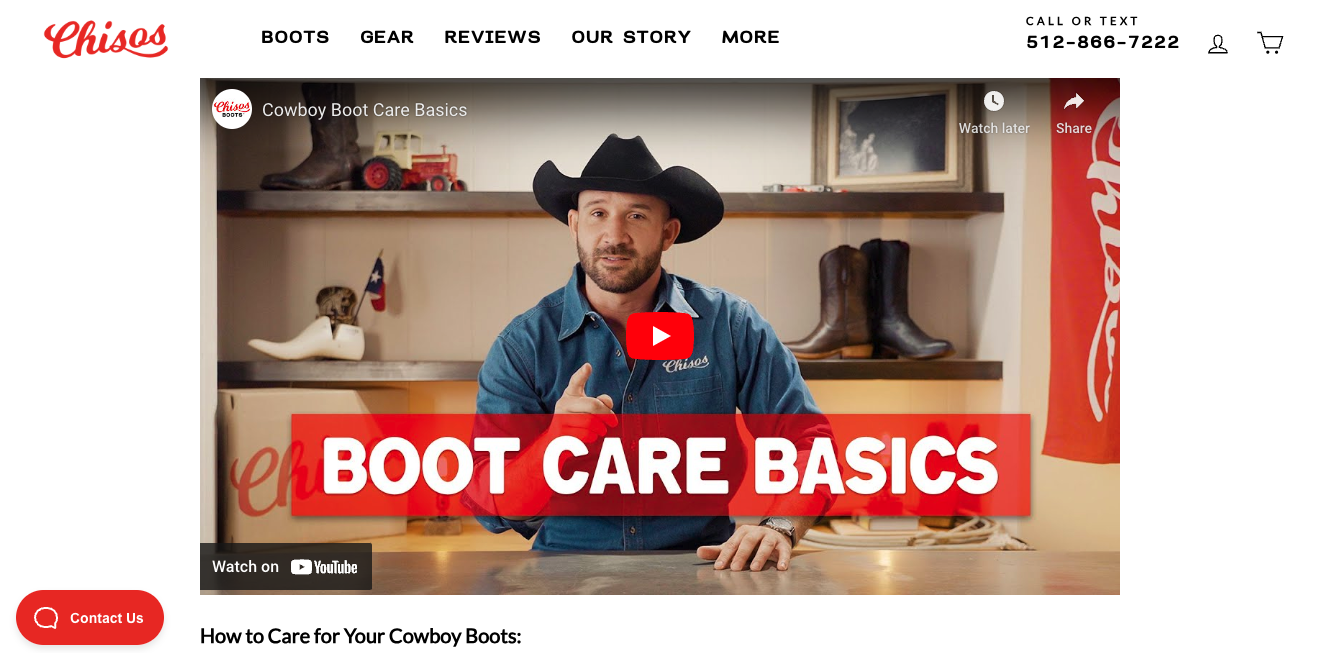
Email Marketing
Your primary goal with off-site marketing strategies may be to attract and capture new leads. Nevertheless, you need to keep in mind that consumers don’t make buying decisions based on a single brand touch.
If you want to move potential clients from the awareness to the purchase (and, ideally, the loyalty) stage of the sales funnel, you need to invest in a marketing tactic that allows you to nurture leads into customers.
Email marketing works marvelously in this regard. It’s the ideal way to present subscribers with highly targeted content and funnel traffic to relevant content or landing pages on-site.
With the Get a Newsletter Email Marketing solution, you can create beautiful, personalized newsletters, but that’s not all. You can also analyze performance, automate email campaigns, and adjust your newsletters to yield the best possible results, regardless of whether you’re targeting B2B or B2C subscribers.
B2B: Use email to deliver personalized value to subscribers
One of the best ways to shape your email marketing tactic for professional leads is to use it as a system that allows you to present subscribers with unique, highly-targeted value.
Use email to distribute content, announce product updates and novel features, and employ email marketing for your onboarding strategy to ensure the best possible customer experience for new clients.
B2C: Send frequent, engaging promotional messages to inspire purchases and re-purchases
As for B2C email marketing, your primary goal should be to capture your subscriber’s attention with engaging copy and design. Then, send traffic to your website by highlighting special offers, personalized recommendations, and loyalty perks and reminding prospects of the immense value offered by your brand.
Social Media Marketing
People spend over two hours browsing social networks per day, so naturally, you’ll want to invest in social media marketing. The best way to shape your strategy will hugely depend on your target audience.
It’s not just that different types of audiences frequent different networks. Their behaviors on social channels vary as well, showing just how crucial it is to follow the right marketing principles to ensure success.
B2B: Prioritize authority and connection
Professional users often go on social networks to solve work-related tasks or to network. In fact, knowing that 78% of professionals consider social media an effective way to build relationships, connect with experts, and find information, your brand must have an active online presence.
Use platforms like LinkedIn, Twitter, and industry forums to distribute thought leadership and establish brand credibility. Make the most of these channels for networking purposes. Your next great hire might come from one of them!
For inspiration on how to approach social media for your B2B brand, check out Templafy on LinkedIn. Using the platform to primarily connect with its target audience and engage followers, the business does a great job emphasizing its authority on business documentation and empowering followers to make the most of its solutions.
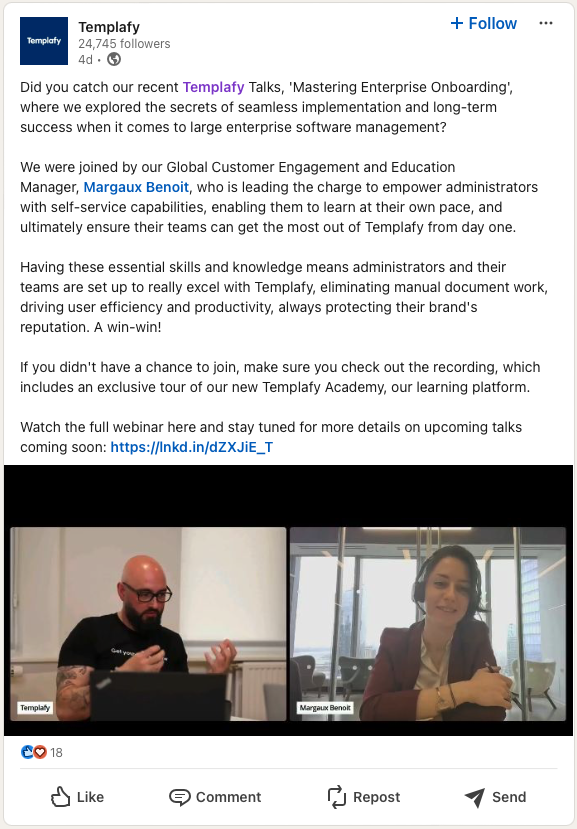
B2C: Delight and engage followers with visuals and lifestyle content
As for the everyday social media user, their preferences aren’t as refined as in the B2B sector.
The best way to win at B2C social media marketing is to:
- Post attractive lifestyle content that engages followers.
- Collaborate with influencers to maximize reach and build trust.
- Prioritize customer interaction to build strong relationships with potential clients.
Facebook, Instagram, and TikTok are all amazing platforms to focus on due to their popularity. However, don’t disregard smaller networks. For instance, Mannequin Mall does a beautiful job on Pinterest, creating some of the most attractive boards that attract fashionistas and visual merchandisers alike.
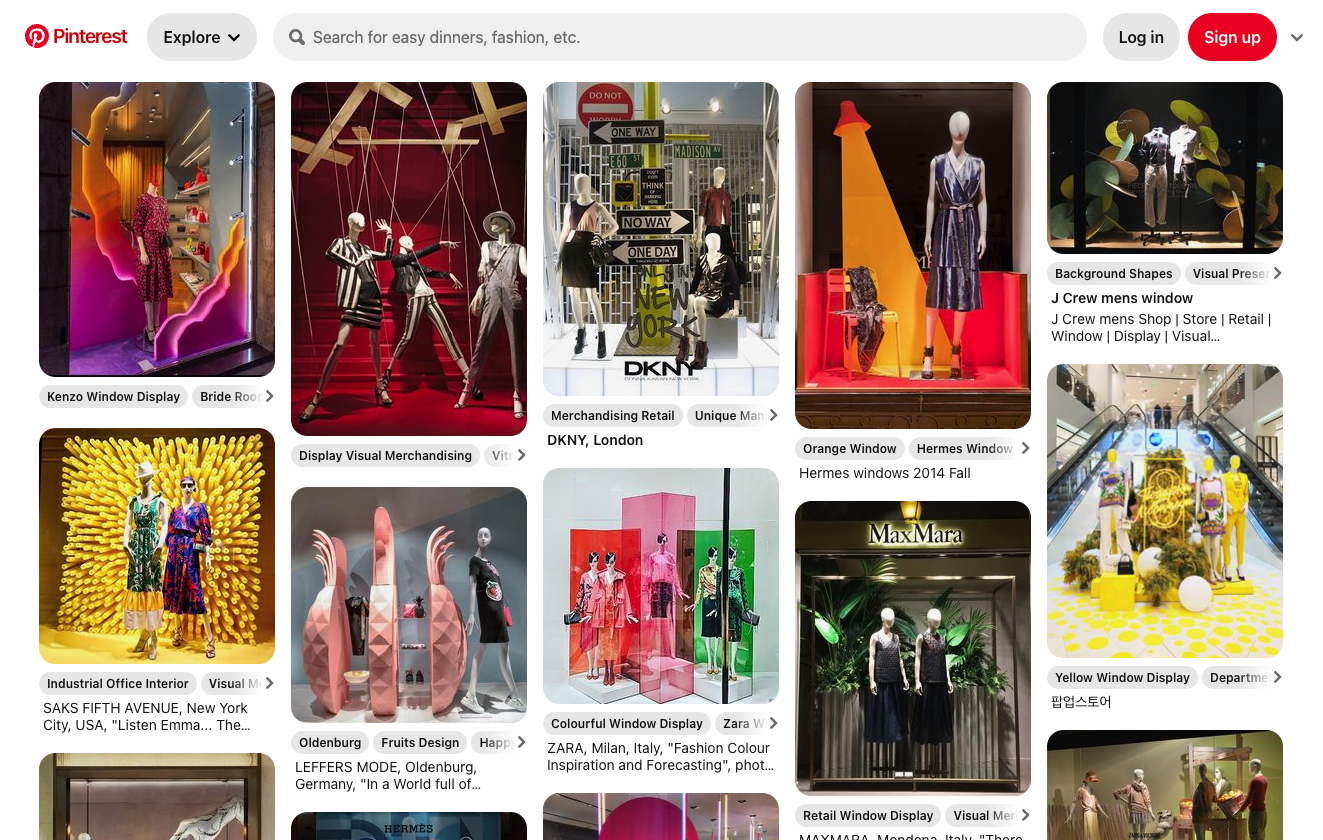
Pay-Per-Click (PPC) Advertising
Even though organic traffic is irreplaceable on your brand’s way to growth, a well-rounded marketing strategy necessitates at least some paid promotion.
PPC advertising can be an incredibly effective way to reach new (and existing) leads. You’ll want to know how to adapt it based on whether you’re targeting professionals or individual consumers.
B2B: Target professional networks and high-value keywords
B2B customers have highly specific pain points. Generally, they understand their needs and the potential solutions they might require.
So, the ideal approach to B2B PPC is to get straight to the point. Create targeted ads on professional networks, like LinkedIn. Make sure to utilize keywords that directly address your prospects’ demands.
If you invest in Google Ads, apply the same principles you would to crafting your value proposition. And always do your best to wow prospects with authority and value.
Finally, don’t forget to create remarketing campaigns, especially considering the complexity and length of the B2B buying journey.
B2C: Aim for reach
As for shaping your PPC advertising strategy to convert individual customers, your primary focus should be maximizing reach and enabling instant conversions.
Do this by:
- investing in search engine and social media ads on relevant channels
- utilizing social commerce, which is growing in popularity by the day
- employing UX design to make the checkout process straightforward, which helps guarantee as many conversions as possible
SMS Marketing
Finally, if you’re searching for methods to nudge existing leads toward the lower stages of the sales funnel (or re-engage them after a period of inactivity), do your best to incorporate SMS marketing in your B2B and B2C campaigns.
B2B: Embrace direct communication with key stakeholders
The biggest challenge of converting and retaining professional users is that each purchasing or re-purchasing decision goes through several people. You need to transform your solution into an irreplaceable aspect of your client’s workflow, but you can’t stop there. You’ll need to maintain a strong relationship that ensures high retention rates.
A solid SMS marketing solution can help you keep in touch with the people who matter — whether with updates or reminders. Moreover, it’s a more personal means of communication than email, resulting in a closer client relationship and increasing brand loyalty.
B2C: Engage customers and provide support
In B2C, the best principles for shaping SMS marketing campaigns depend on your desired outcomes.
On the one hand, when aiming for conversions, utilize SMS to deliver relevant promotional offers to your customers, like flash sales alerts or personalized discounts.
On the other hand, to enhance the CX and inspire customer loyalty, use SMS to help your clients. It’s an excellent channel for support interactions, whether those involve resolving an issue or keeping buyers up-to-date regarding the status of their orders.
In Closing
Optimizing your marketing strategies to align with your target audience’s wants and needs is crucial for achieving success.
So, as you set out to maximize ROI for your promotional activities, ensure you adopt the right principles depending on whether you’re targeting B2B or B2C buyers. That way, you can optimize your marketing efforts and get a bigger bang for your buck. Prevent yourself from wasting resources on ineffective campaigns that don’t delight your target audience.
Get started with email marketing
Create beautiful email newsletters for free with Get a Newsletter and reach your subscribers and customers in a heartbeat.
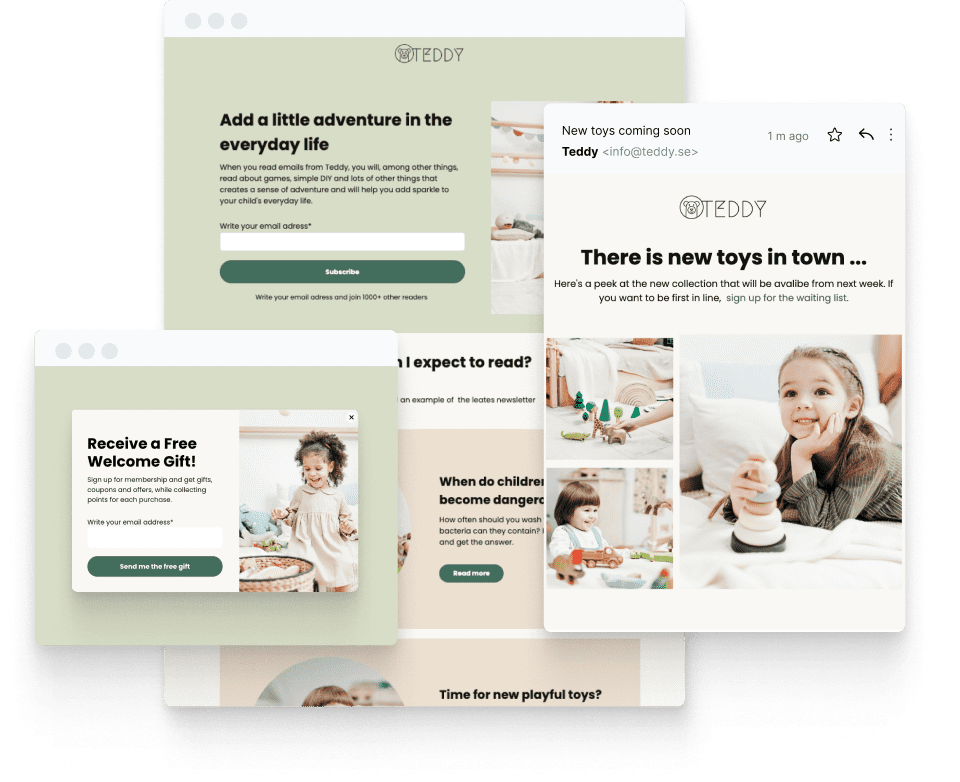
Leave a Reply